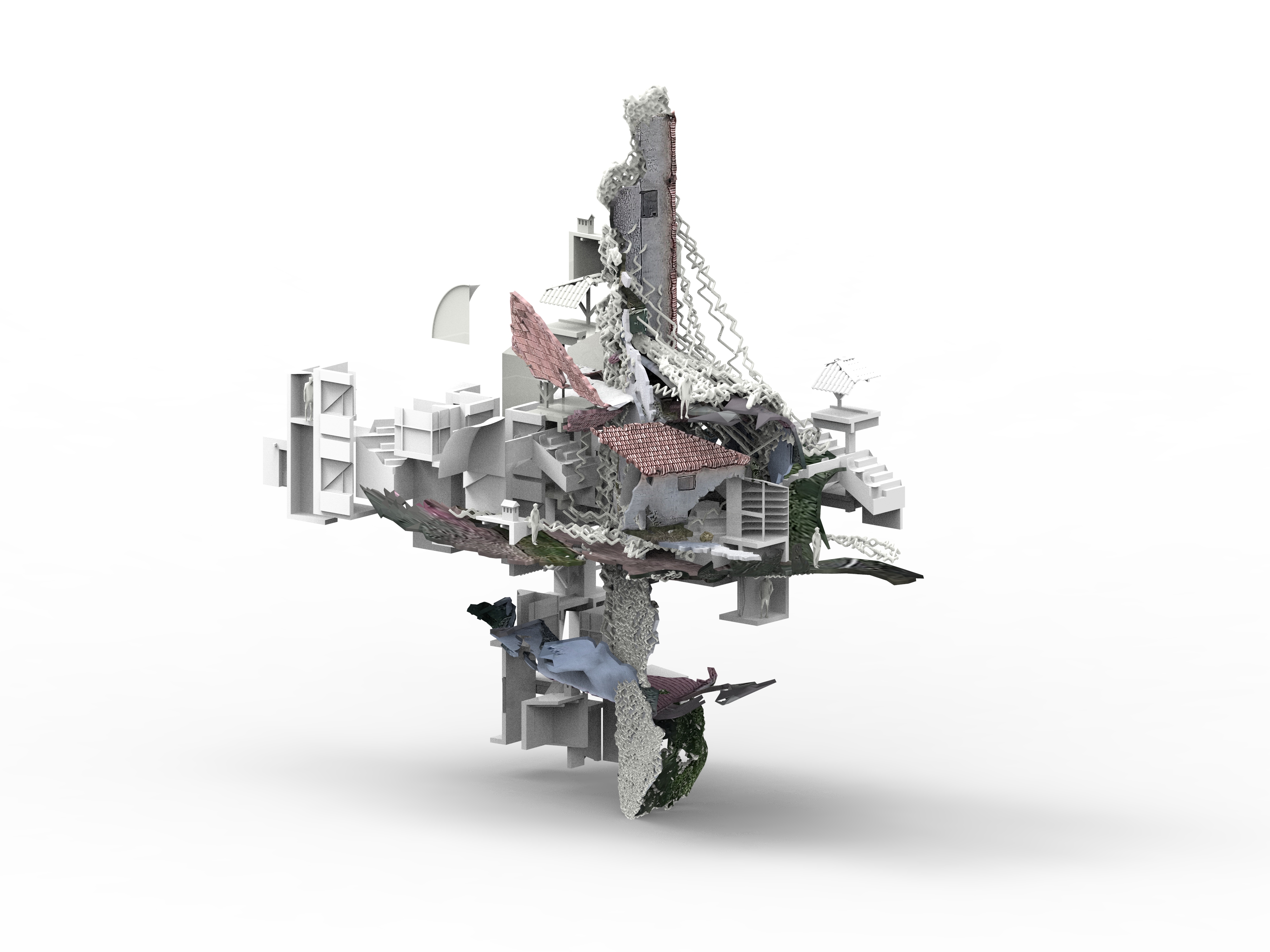
Memory Landscapes
This Project was developed as part of the Virtual Entities workshop from Futurly.
2020
“We are said to be living in a new geological epoch, the Anthropocene, in which humans are the dominant force shaping the planet. This collection of spaces, however, more accurately constitutes an era of the Post-Anthropocene, a period where it is technology and artificial intelligence that now computes, conditions and constructs our world. Marking the end of human-centred design, the issue turns its attention to the new typologies of the post-human, architecture without people and our endless expanse of Machine Landscapes.”
The project is located in the northern part of Greece, where the PPC infrastructure and lignite surface mines are located.
It’s a common tradition in this area to relocate whole villages and communities due to the mining expansion to new lands, leaving behind all the material memory traces, composing a modern archeology. The period of interest for this project is from 2030 to 2050, after the mining operation is scheduled to come to an end and the area will enter the post-traumatic era. We in fact believe that the most significant architectural spaces in the world are now entirely empty of people. They define the very nature of who we are today.
The whole memory landscape starts from photogrammetry, which is extremely useful when the subject is either fragile or inaccessible. In this case the point cloud becomes a timeless memory saving. A collection of mundane objects were extracted from the mesh. These things might be best described by the notion of almost-ness. They have qualities which make them almost the scale of a building, almost ornamental, maybe almost structural.
All these elements of the every-day life are carefully aggregated in order to create a memory temple. The scanned 3d meshes will hold them, as pages of an historical book. Since some parts of the village are already ruins, some wires were introduced in order to recreate and suggest the original spatial dimension.
It originates a cluster of fragments, glimse of the everyday life in the village.
The new hybrid memory entity can be experienced by everyone and it looks like a labyrinth, where everyone is free to take their own path. It derives that the perception of this reality is always different. In this sense it is a methaphore of our reality. The result is a manifest of the importance of memory. Remembering of the past and its corollary, the memorialising of collective historical memory, has become one of humanity’s highest moral obligations. No place is a community until it has awareness of its history. In other words “No place really becomes a community until it is wrapped in human memory: family stories, tribal traditions, civic commemorations.”
Teammate: Eliana Nigro
The project is located in the northern part of Greece, where the PPC infrastructure and lignite surface mines are located.
It’s a common tradition in this area to relocate whole villages and communities due to the mining expansion to new lands, leaving behind all the material memory traces, composing a modern archeology. The period of interest for this project is from 2030 to 2050, after the mining operation is scheduled to come to an end and the area will enter the post-traumatic era. We in fact believe that the most significant architectural spaces in the world are now entirely empty of people. They define the very nature of who we are today.
The whole memory landscape starts from photogrammetry, which is extremely useful when the subject is either fragile or inaccessible. In this case the point cloud becomes a timeless memory saving. A collection of mundane objects were extracted from the mesh. These things might be best described by the notion of almost-ness. They have qualities which make them almost the scale of a building, almost ornamental, maybe almost structural.
All these elements of the every-day life are carefully aggregated in order to create a memory temple. The scanned 3d meshes will hold them, as pages of an historical book. Since some parts of the village are already ruins, some wires were introduced in order to recreate and suggest the original spatial dimension.
It originates a cluster of fragments, glimse of the everyday life in the village.
The new hybrid memory entity can be experienced by everyone and it looks like a labyrinth, where everyone is free to take their own path. It derives that the perception of this reality is always different. In this sense it is a methaphore of our reality. The result is a manifest of the importance of memory. Remembering of the past and its corollary, the memorialising of collective historical memory, has become one of humanity’s highest moral obligations. No place is a community until it has awareness of its history. In other words “No place really becomes a community until it is wrapped in human memory: family stories, tribal traditions, civic commemorations.”
Teammate: Eliana Nigro








©
George Vlasis Pakalidis, Copenhagen, 2024
